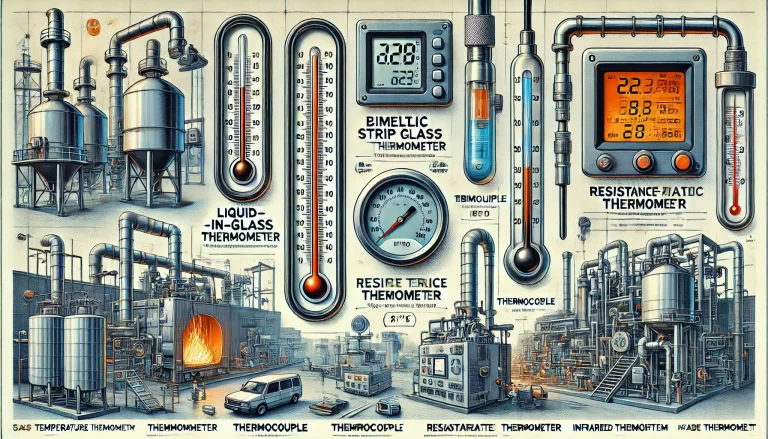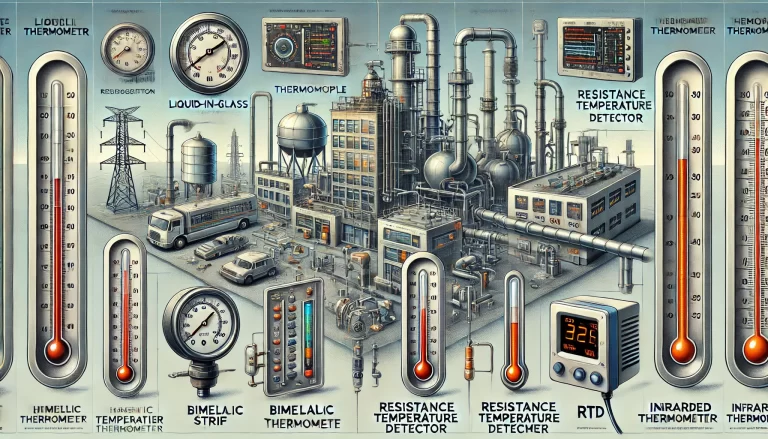Bimetallic thermometers are widely used for their simplicity, reliability, and cost-effectiveness in measuring temperature across various applications. These instruments operate by utilizing the differential expansion of two bonded metals that bend as the temperature changes, causing a pointer to move across a calibrated scale. However, like all instruments, bimetallic thermometers have a defined operational range, known as the maximum range. When the thermometer is subjected to temperatures beyond this range, several potential outcomes may occur, depending on its design and the degree of overexposure.

Scenario 1: Display of Maximum Value
In most cases, when a bimetallic thermometer is exposed to temperatures exceeding its maximum range, the pointer will simply rest at the highest point of the scale. This is because the physical mechanism driving the pointer can only move within the limits of the calibrated range. For example, if the thermometer is rated for a range of -50°C to 300°C, any temperature above 300°C will result in the pointer staying fixed at the 300°C mark.
This behavior does not necessarily indicate damage to the thermometer. However, it does mean the device is no longer accurately reflecting the true temperature. Prolonged exposure to extreme temperatures, even if the pointer remains at the maximum value, can lead to other complications, as described below.

Scenario 2: Mechanical Damage or “Explosion”
Exceeding the maximum range by a significant margin can result in mechanical failure of the thermometer. The bimetallic strip, which is designed to bend predictably within a specific temperature range, may deform permanently if subjected to excessive heat. In severe cases, this deformation can cause internal components to jam or break. The term “blowout” or “explosion” is sometimes used metaphorically to describe instances where excessive force damages the housing or causes the pointer mechanism to malfunction catastrophically.
While rare, extreme overloading can lead to structural damage to the thermometer’s casing or glass lens. This typically occurs only under significant overexposure or if the thermometer is exposed to conditions beyond what it was mechanically designed to withstand.
Scenario 3: Loss of Accuracy
Even if a bimetallic thermometer does not suffer immediate mechanical failure, exposure to temperatures beyond its range can permanently alter the properties of the bimetallic strip. The metals may experience changes in elasticity, leading to inaccurate readings even after the thermometer is returned to normal operating conditions. This loss of accuracy is a common long-term consequence of overexposure and can render the thermometer unreliable for precise applications.

Preventive Measures
To avoid these scenarios, several preventive measures can be taken:
Select the Appropriate Range: When choosing a bimetallic thermometer, ensure its range is suitable for the application. For example, if the operational environment involves temperatures up to 250°C, select a thermometer with a range slightly higher than this (e.g., up to 300°C) to account for potential fluctuations.
Use Protective Devices: In environments with rapidly changing or extreme temperatures, consider using a temperature limiter, thermal cutoff device, or protective sheath to shield the thermometer from direct exposure to damaging heat levels.
Regular Maintenance and Calibration: Periodic calibration can identify any drift in accuracy caused by wear or overexposure. If damage is suspected, the thermometer should be inspected for signs of mechanical deformation or other issues.
Monitor and Replace as Needed: If a thermometer has been subjected to conditions beyond its specified range, it is advisable to replace it, especially in critical applications where accuracy is paramount.

Conclusion
Bimetallic thermometers are robust and versatile instruments, but like all tools, they have their limitations. Exceeding the maximum range can lead to outcomes ranging from a simple pointer freeze at the maximum value to permanent damage or loss of accuracy. Understanding the potential risks and implementing preventive measures can ensure the longevity and reliability of these devices in a variety of applications. For applications involving extreme or fluctuating temperatures, consider alternative technologies, such as thermocouples or resistance temperature detectors (RTDs), which offer broader operational ranges and greater durability.
